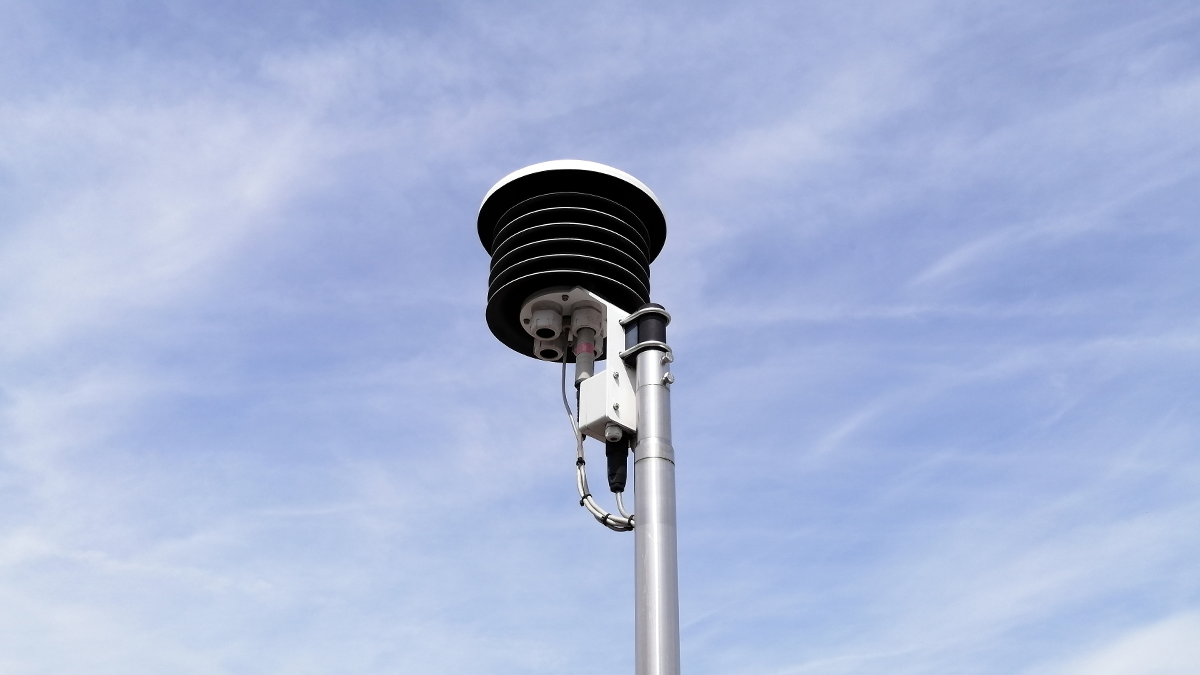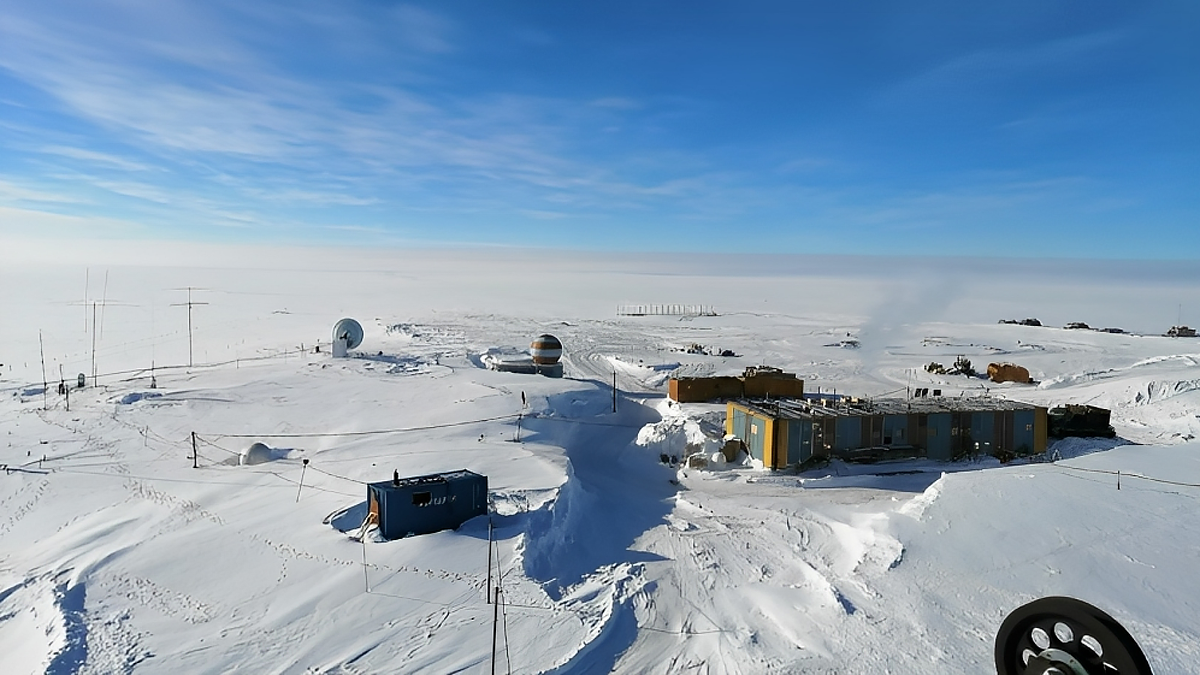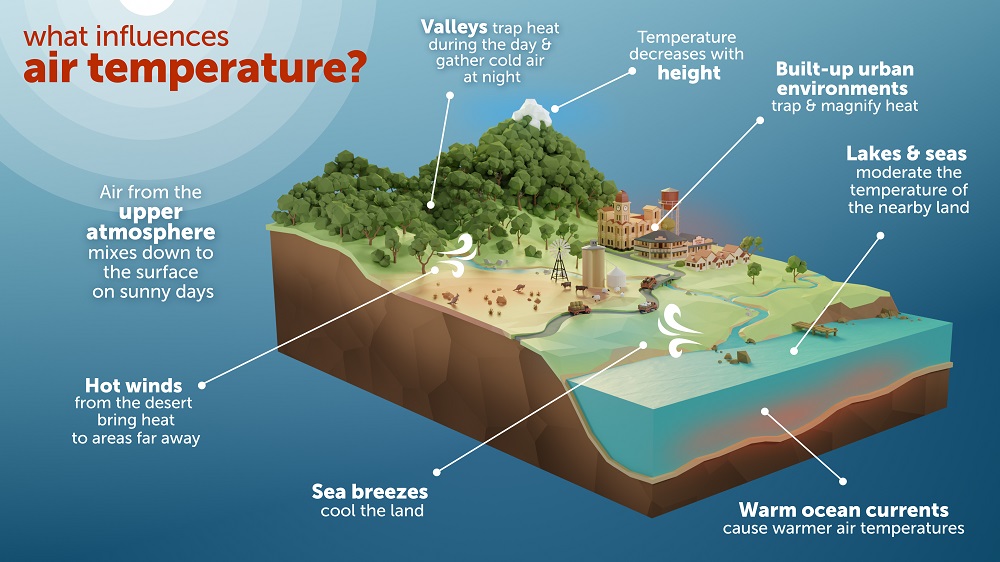Air temperature is the most commonly measured temperature parameter, and it has significant implications for human comfort, agriculture, and industry. Air temperature measurement has come a long way from the rudimentary methods used in the past to the sophisticated instruments used today.
In this article, we will explore the history of temperature measurement, the different techniques used to measure air temperature, interesting facts about this weather parameter, and the coldest and hottest places on Earth.

The History of Temperature Measurement
The concept of temperature has been around for centuries, and early civilizations had a basic understanding of the relationship between temperature and the environment. However, the measurement of temperature did not begin until the 17th century. In 1592, Galileo Galilei invented the first thermometer, which used a glass bulb filled with a liquid, usually alcohol or mercury, that expanded or contracted depending on the temperature. This thermometer was not very accurate, but it laid the foundation for the development of more advanced instruments.
The first standardized temperature scale was developed by Anders Celsius in 1742. The Celsius scale was based on water’s freezing and boiling points, with 0 degrees Celsius being the freezing point and 100 degrees Celsius being the boiling point. This scale was widely adopted and is still used today in most countries, except for the United States, which uses the Fahrenheit scale.
In the early 1800s, Sir John Leslie developed the first pyrometer, an instrument that could measure high temperatures without coming into contact with the object being measured. This was an important development for the industry, where the measurement of high temperatures was crucial for the manufacturing process.
Techniques for Measuring Air Temperature
Today, there are many techniques for measuring air temperature, ranging from simple thermometers to sophisticated weather stations. The most common method for measuring air temperature is to use a thermometer. A thermometer consists of a glass or plastic tube filled with a liquid, usually mercury or alcohol, which expands or contracts depending on the temperature. The temperature is read by looking at a scale on the side of the thermometer.

Interesting Facts about Air Temperature
More sophisticated instruments, such as weather stations, use a variety of sensors to measure air temperature. These sensors can measure temperature, humidity, pressure, wind speed, and direction. Weather stations are used to provide real-time data on weather conditions and are critical for weather forecasting and climate research.
Did you know that the highest temperature ever recorded on Earth was 134 degrees Fahrenheit (56.7 degrees Celsius) in Death Valley, California, in 1913? This is the highest temperature ever reliably recorded on Earth. On the other hand, the coldest temperature ever recorded was -128.6 degrees Fahrenheit (-89.2 degrees Celsius) in Vostok, Antarctica, in 1983.

Another interesting fact is that the air temperature at the summit of Mount Everest is about -40 degrees Fahrenheit (-40 degrees Celsius) year-round. This is because the summit is located in the stratosphere, where the air is very thin and does not hold much heat.
Most Cold and Hot Places on Earth
As mentioned above, in Antarctica, the Russian research station Vostok holds the record for the coldest temperature ever recorded on Earth while the surrounding region is also known for its frigid temperatures, with some areas experiencing temperatures as low as -90 degrees Fahrenheit (-68 degrees Celsius) in the winter months.
On the other hand, the hottest place on Earth is the Lut Desert in Iran, where temperatures can reach up to 159 degrees Fahrenheit (70 degrees Celsius). Other hot places include the Sahara Desert, Death Valley in California, and the Dasht-e Lut in Iran.
In South America, the Atacama Desert is known for its extreme temperature variations, with some areas experiencing temperatures as low as -25 degrees Fahrenheit (-32 degrees Celsius) at night and temperatures as high as 104 degrees Fahrenheit (40 degrees Celsius) during the day.

In Australia, the hottest place is Marble Bar in Western Australia, which has recorded temperatures as high as 128 degrees Fahrenheit (53 degrees Celsius) in the summer months.
Preparing for a Hotter Planet: Challenges of Climate Change
Air temperature is an essential parameter in meteorology, and its measurement has come a long way since the development of the first thermometer. Today, we have a variety of instruments that can measure air temperature accurately and in real-time.
The measurement of air temperature has significant implications for human comfort, agriculture, and industry, and it is critical for weather forecasting and climate research. From the coldest place on Earth to the hottest, the range of temperatures that exist on our planet is vast and diverse. Understanding these temperature extremes is crucial for our understanding of the Earth’s climate and how it is changing over time.
According to the Intergovernmental Panel on Climate Change (IPCC), global air temperature is projected to continue to rise in the coming decades. The IPCC predicts that if greenhouse gas emissions continue to increase at the current rate, global air temperature could increase by 1.5 degrees Celsius (2.7 degrees Fahrenheit) above pre-industrial levels by as early as 2030.

This increase in temperature is expected to have significant impacts on the planet, including more frequent and severe heatwaves, droughts, and wildfires. It is also likely to lead to sea-level rise and more frequent extreme weather events, such as hurricanes and floods.
However, it is worth noting that these projections are based on a range of assumptions and uncertainties, and there is still some debate among scientists about the exact magnitude and timing of future temperature changes. Some researchers argue that the impacts of climate change could be even more severe than current projections suggest, while others believe that the impacts may be less severe if efforts are made to reduce greenhouse gas emissions.
Regardless of the exact trajectory of future air temperature, it is clear that addressing climate change is an urgent global priority. Efforts to reduce greenhouse gas emissions, such as transitioning to renewable energy sources and improving energy efficiency, are crucial in mitigating the impacts of climate change and protecting the planet for future generations.
wirestock on Freepik, polarjournal.ch, The Bureau Of Meteorology and NASA Goddard Institute for Space Studies provided images used in this article.